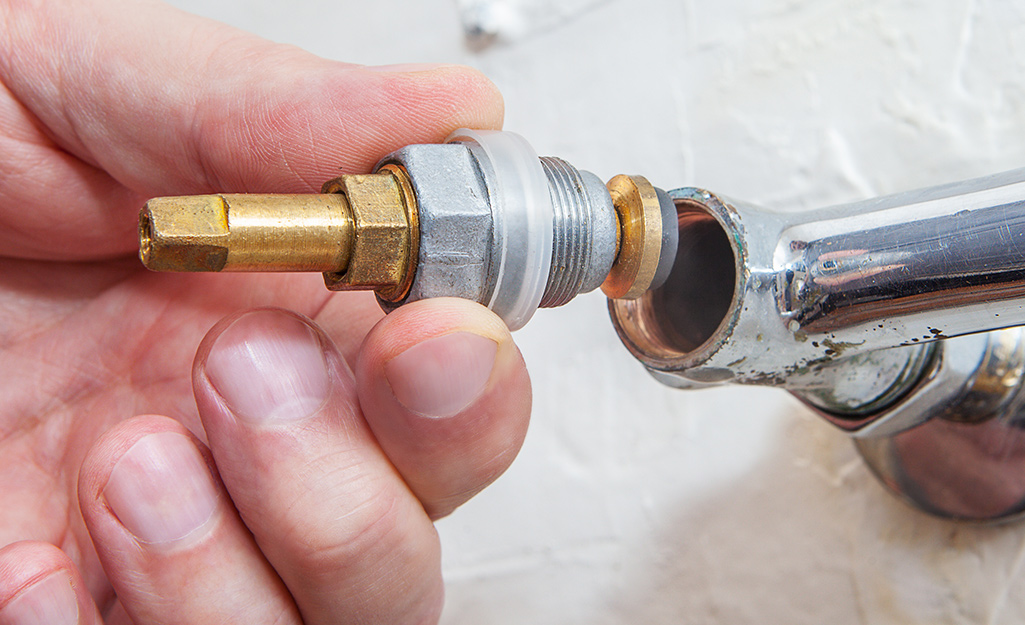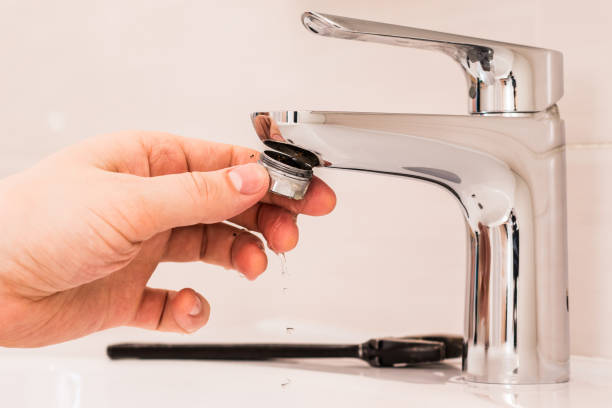Our Advantages of Dealing with a Leaking Faucet
Our Advantages of Dealing with a Leaking Faucet
Blog Article
The publisher is making several great observations related to Leaky Faucets: Why They Happen & What to Do About Them as a whole in the article following next.

Trickling faucets could seem like a small aggravation, but their effect surpasses just the aggravation of the sound. From drainage to sustaining unneeded financial costs and health dangers, overlooking a trickling faucet can lead to numerous repercussions. In this short article, we'll look into why it's crucial to address this usual house problem without delay and efficiently.
Wastefulness of Water
Environmental Effect
Trickling faucets contribute dramatically to water wastage. According to the Epa (EPA), a solitary faucet dripping at one drip per second can squander more than 3,000 gallons of water annually. This not just pressures water sources yet also impacts ecosystems and wildlife dependent on them.
Step-by-Step Guide to Fixing a Dripping Faucet
Devices Required
Before trying to fix a trickling tap, collect the required devices, including a flexible wrench, screwdrivers, substitute parts (such as washers or cartridges), and plumber's tape.
Usual Faucet Issues and Their Solutions
Recognize the type of tap and the particular problem causing the drip. Usual issues include worn-out washers, rusty shutoff seats, or damaged O-rings. Describe manufacturer guidelines or on the internet tutorials for detailed assistance on repairs.
Financial Expenses
Raised Water Bills
Past the environmental effect, dripping faucets can pump up water bills considerably. The accumulated waste gradually converts into higher utility costs, which might have been avoided with timely repair services.
Possible Home Damages
Additionally, long term leaking can cause harm to fixtures and surface areas bordering the tap. Water buildup can cause discoloration, deterioration, and also architectural problems if left ignored, resulting in additional repair costs.
Wellness Worries
Mold And Mildew and Mold Growth
The consistent presence of dampness from a leaking tap creates an excellent environment for mold and mildew and mold growth. These fungis not just endanger indoor air high quality however additionally pose health and wellness dangers, specifically for people with respiratory conditions or allergic reactions.
Waterborne Conditions
Stationary water in dripping faucets can end up being a breeding ground for germs and other microorganisms, enhancing the danger of waterborne diseases. Contaminants such as Legionella bacteria thrive in stationary water, possibly causing severe illnesses when ingested or breathed in.
DIY vs. Expert Fixing
Pros and Cons of Do It Yourself Fixing
While some might attempt to deal with a leaking faucet themselves, do it yourself repair work come with their very own set of obstacles. Without correct knowledge and devices, DIY efforts can exacerbate the problem or lead to incomplete repair work, lengthening the problem.
Benefits of Working With a Professional Plumber
Employing an expert plumber makes certain that the underlying root cause of the trickling faucet is dealt with successfully. Plumbing professionals possess the knowledge and devices to diagnose and repair faucet issues efficiently, saving time and reducing the risk of further damage.
Environmental Responsibility
Specific Payment to Preservation
Taking duty for dealing with leaking faucets aligns with broader initiatives toward water conservation and environmental sustainability. Every individual's activities jointly make a considerable impact on maintaining valuable sources.
Lasting Living Practices
By focusing on prompt fixings and embracing water-saving habits, individuals add to sustainable living practices that profit both existing and future generations.
Preventive Measures
Normal Maintenance Tips
To avoid trickling faucets, perform routine maintenance such as cleaning aerators, examining for leakages, and changing worn-out components promptly. Furthermore, consider setting up water-saving gadgets or upgrading to much more efficient components.
Significance of Prompt Services
Attending to dripping faucets as quickly as they're noticed stops more water wastefulness and possible damage, inevitably conserving both water and cash in the future.
Influence On Residential Property Worth
Assumption of Well-Maintained Building
Maintaining a home in good condition, including addressing upkeep problems like leaking faucets, boosts its viewed worth and charm among possible purchasers or lessees.
Impact on Resale Value
Characteristics with well-kept plumbing fixtures, consisting of taps, command higher resale worths in the real estate market. Resolving trickling faucets can add to a favorable impression throughout property assessments and arrangements.
Conclusion
Dealing with a leaking tap surpasses plain ease; it's an essential step towards preserving water, reducing financial costs, and protecting health and wellness and property. Whether through do it yourself repair work or professional assistance, taking action to fix trickling taps is a little yet impactful way to advertise liable stewardship of resources and contribute to a much healthier, much more sustainable future.
Why Are My Faucets Dripping (And Can I Fix it Myself)?
Causes of a Dripping or Leaking Faucet
Whether you’re hearing drops of water falling and hitting a sink, or noticing water ooze out from the base of the spout, you shouldn’t ignore a dripping or leaking faucet. And, the good news is, sometimes you can fix the problem yourself.
In this article, we’ll review a few common causes of dripping and leaky. We’ll also walk you through some basic ways to find the problem and handle it without calling anyone — and let you know when to call in a pro.
But, no matter what the cause, or whether you can handle it on your own, the sooner you address it, the better.
Each drip may be a tiny amount of water. But, they all add up quickly. According to the U.S. Geological Survey, one faucet losing one drop every 20 seconds — five a minute — wastes around a liter of water every day, and 173 gallons a year.
Add in more than one in your house, and it’s a lot of water to waste. So, we’ll help you get to the bottom of things quickly.
Four Reasons Your Faucet May Be Dripping
Aerator is Damaged or Unseated Valve Seat is Corroded O Ring is Loose or Worn Out Part of the Assembly is Loose Aerator is Damaged or Unseated
If you unscrew the end of your faucet, you’ll find the aerator. It’s the little stem piece with a screen on it that shuts off the water circulation.
If it’s damaged, or if it’s not sitting right, it will allow water to pass through.
Valve Seat is Corroded
Next is the valve seat, which is connected to the washer. If the washer wasn’t in place correctly, then it could have ground against the seat. Over time, this damages the valve seat.
The problem could also be corrosion: Over time, the part has worn out, and it’s now allowing water to pass through.
O Ring is Loose or Worn Out
Since the o ring is only a small rubber gasket, it’s a common reason why the faucet is dripping. You’ll find it at the base of the faucet, and it’s there to keep water from coming out where it’s not supposed to.
However, it’s common for the o ring to wear out over time. When it does, you’ll notice a drip.
Part of the Assembly is Loose
So far, we’ve looked at a few small, specific parts. But, the problem could be anywhere in the assembly if something’s out of place.
Even if a part isn’t damaged, over time, it may have become loose or dislodged. It could be the parts we mentioned, or the aerator at the tip of the faucet, the stem itself,
Can I Fix a Leaky Faucet Myself?
Depending on the problem, and how handy you are, there’s a chance you can fix a leaky faucet without calling a professional. But, you do run the risk of making the problem worse.
If it’s a small drip, you can certainly try a few troubleshooting tactics. We’ll walk you through them in a moment.
But, no matter what, your first step should be shutting off the water coming into the faucet. You should find a shutoff valve under the sink on the pipes leading to it. Turn each one clockwise until they close tightly.
Next, make sure you have the right tools for whatever you’re attempting. It’s tempting to make do with what you have. But, you need the right ones for a reason: You’re often dealing with small parts that can break if you handle them carelessly.
If you’re feeling confident, here are some places to start.
Items Near the Tip of the Faucet
A few of the parts we mentioned — particularly the valve seat and washer — are located at the tip of the faucet where the water comes out. They’re easy to access, making it a good place to start.
Check the O Ring
To check the o ring, you’ll need to take off the spout at the base. It’s easiest on kitchen sinks with long spouts, versus the smaller, bulkier base on most bathroom sinks.
Either way, this can be tricky, so do it carefully and don’t force anything. If it’s not coming right off, you’re much better off calling in a pro than possibly breaking something.
For a kitchen sink, there’s usually a nut or coupling assembly at the base of the spout. These often slide off easily without using any tools.
Once you’ve disassembled those parts, gently but forcefully twist off the spout.
Then, you can see the o rings. There should be two of the rubber gaskets on the base. If they look worn or damaged, replace them, and see if that solves the problem.

I'm just very curious about Leaky Faucets: Why They Happen & What to Do About Them and I am praying you enjoyed my article. Sharing is caring. Helping others is fun. I appreciate reading our article about What Causes Leaky Faucets & How To Fix Them.
Report this page